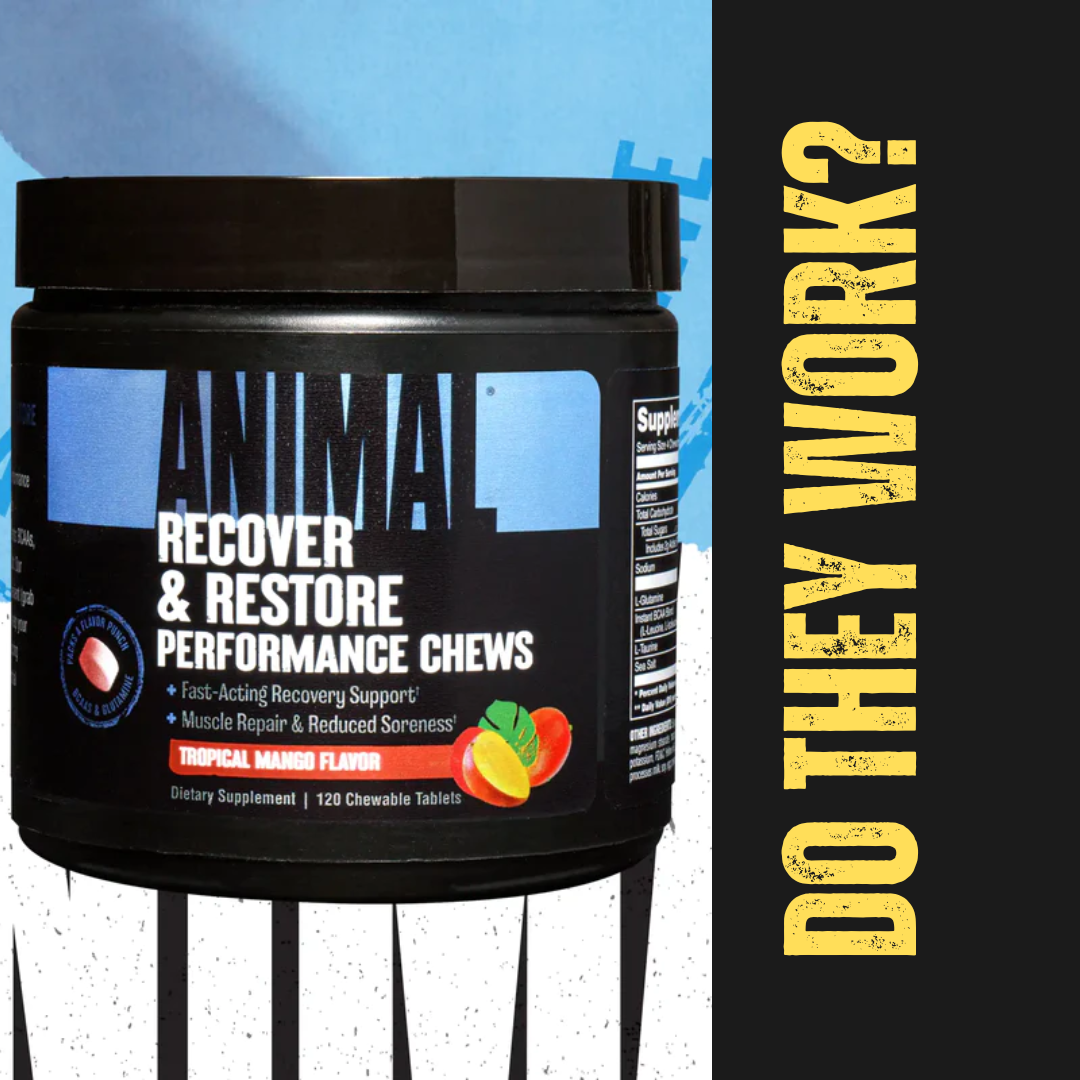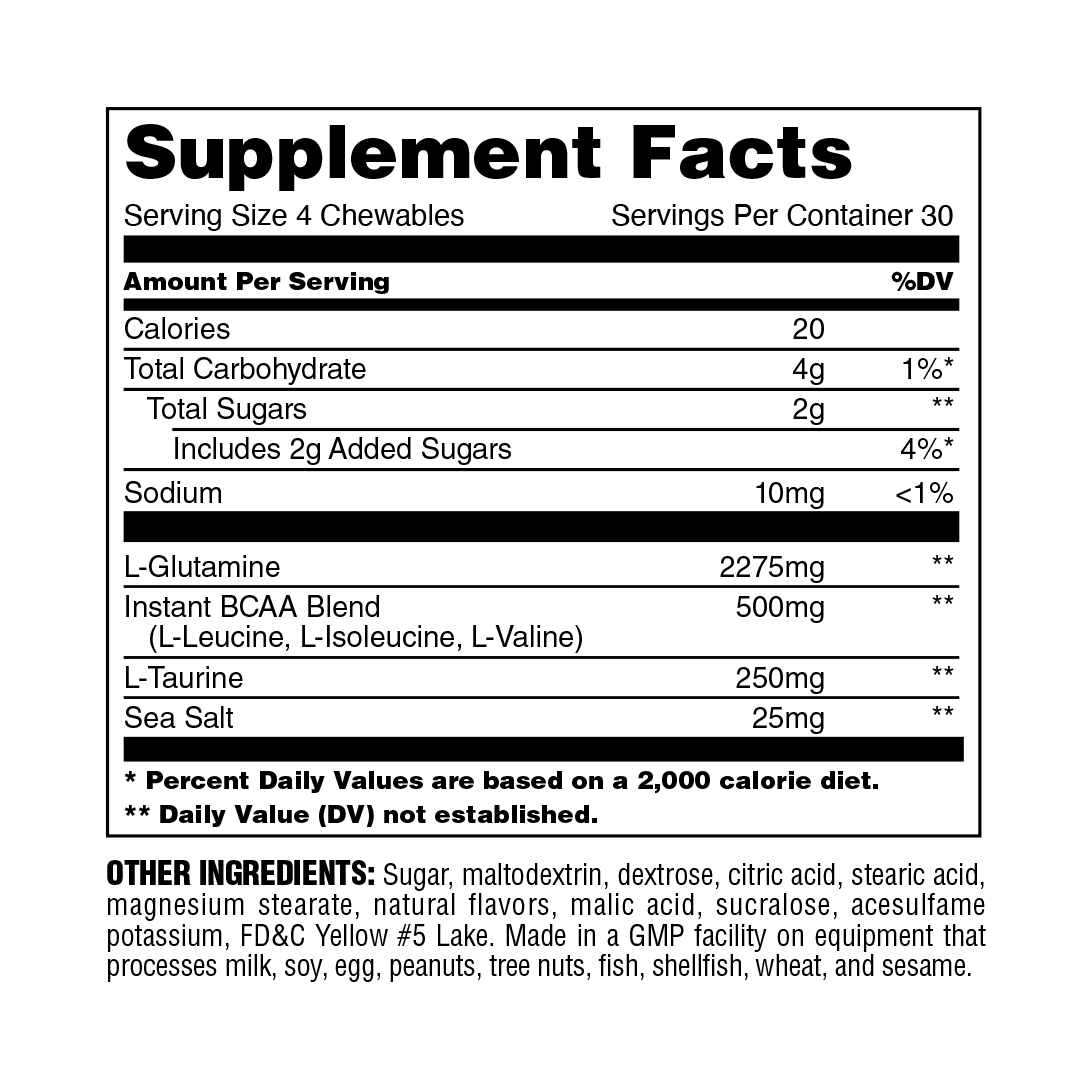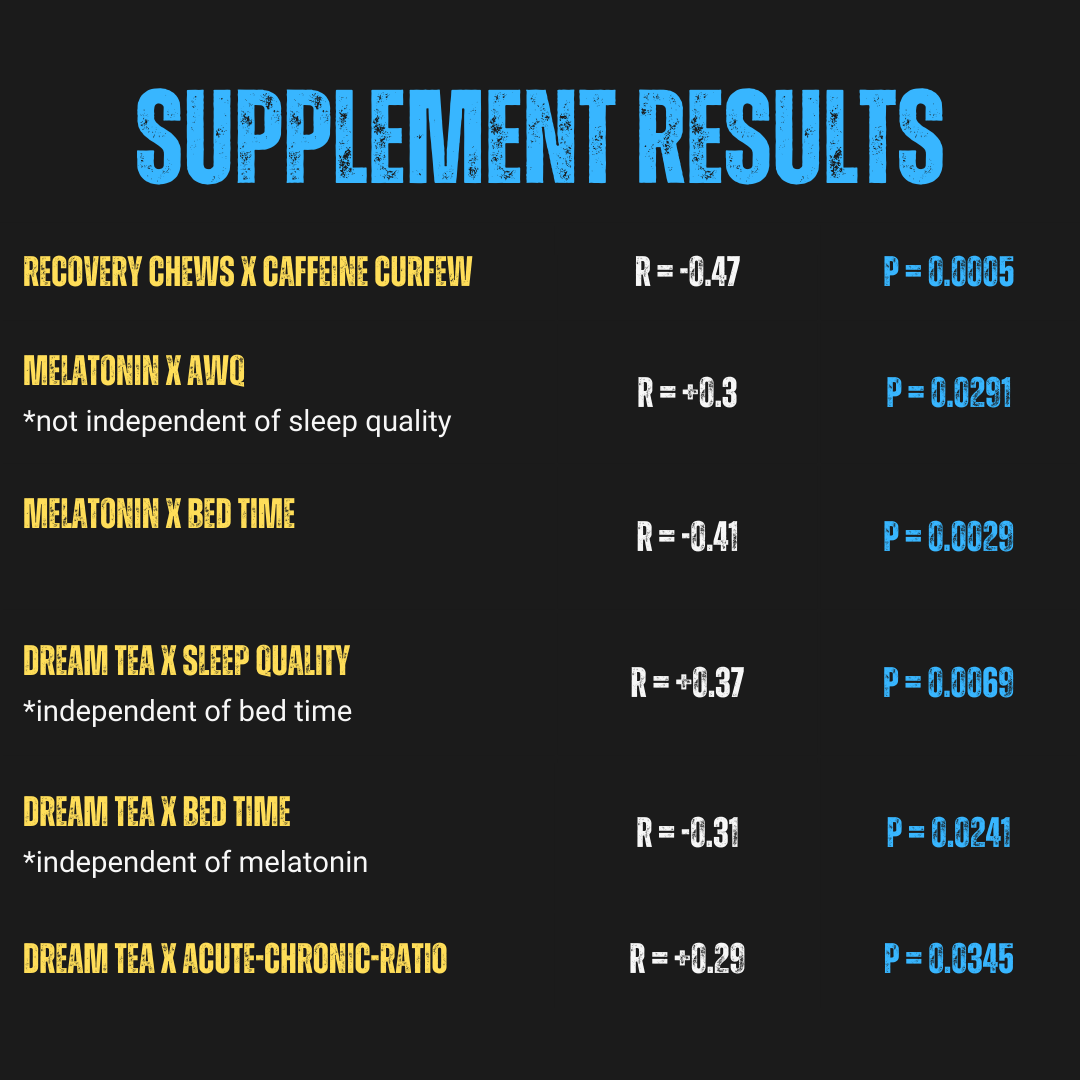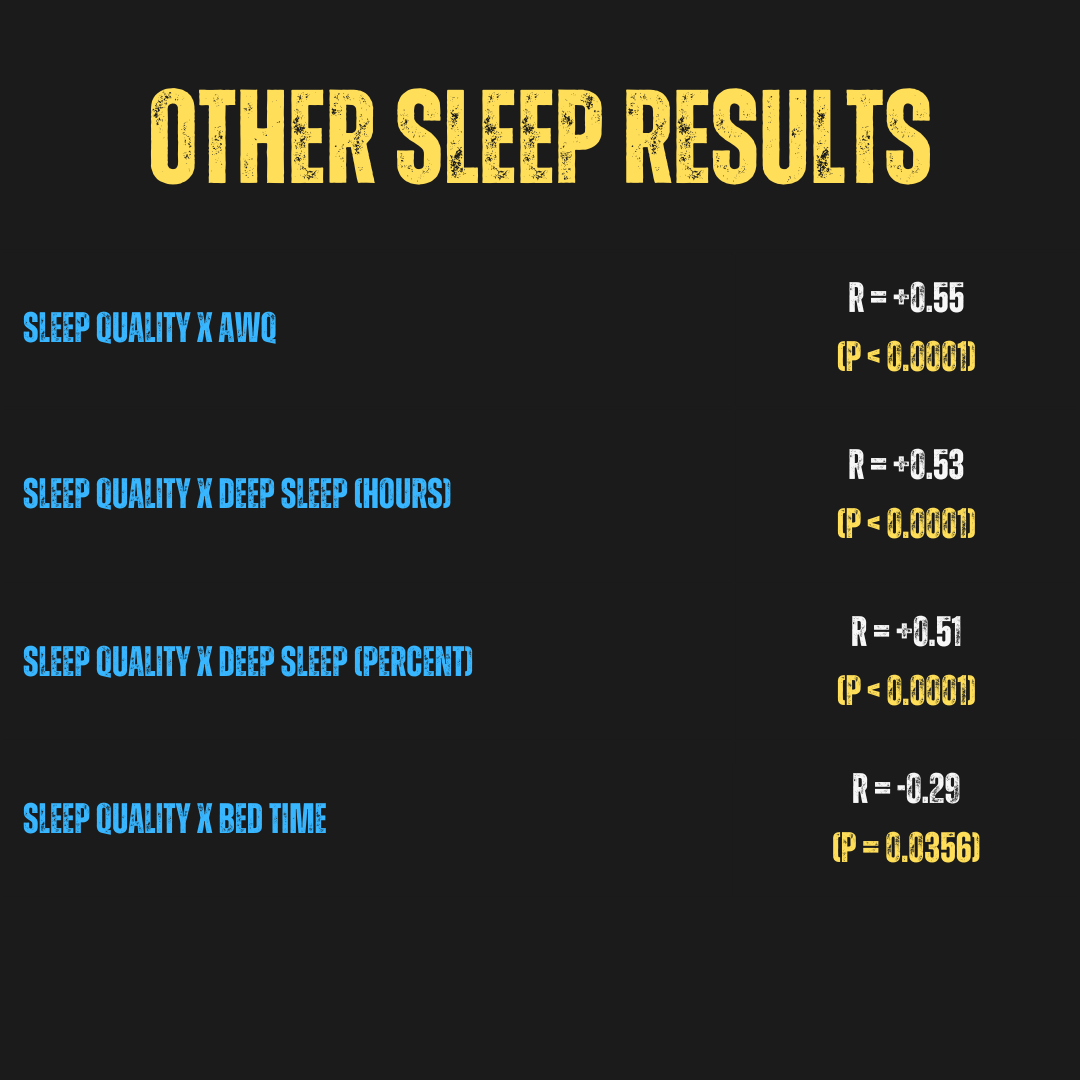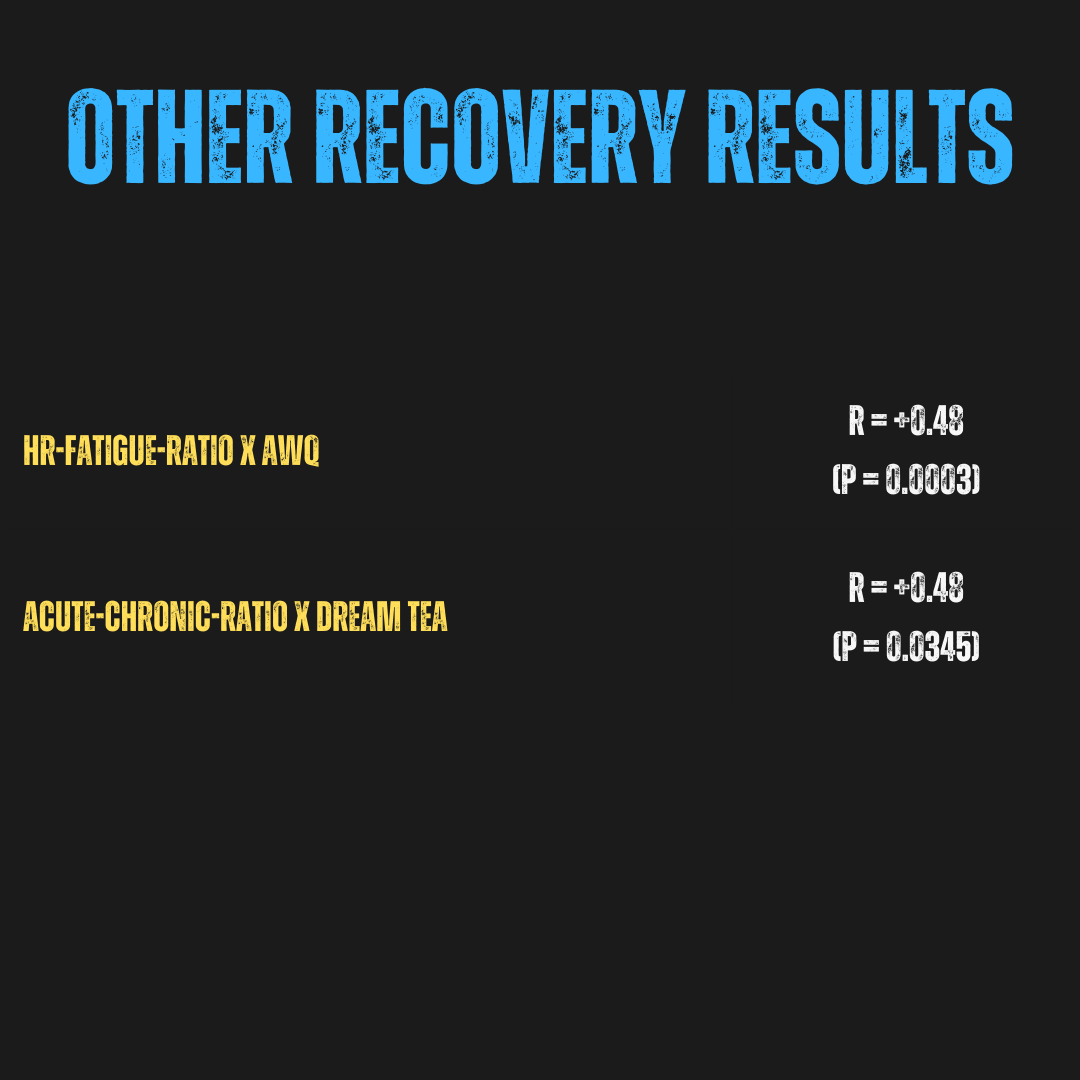Sleep, Amino Acids, and Recovery
Reviewing Animal Pak's Recovery Chews (amino acids) and exploring caffeine, sleep, melatonin, herbal teas, and recovery metrics.
Austin Haedicke
934 Words | Read Time: 4 Minutes, 14 Seconds
2024-02-02 06:00 -0800
I’m continuing to test several of Animal Pak’s supplements — specifically their “chews” line. This time we’ve got their Recovery Chews on queue which are essentially a combination of amino acids. The task for me was to compare the supplement versus dietary sources of those same amino acids for their relationship to various recovery metrics.
Along the way, as usual, several interesting other pieces of information emerged regarding herbal teas, melatonin, and caffeine.
15% off code: savagezen15
First, let’s take a look at the ingredients in Recovery Chews as well as review the literature surrounding the active components.
Taurine has been shown to improve time to exhaustion and vertical jump performance, but not VO2max or RPE (rated physical exertion) (ref.).
Leucine is notable for it’s role in muscle-protein synthesis (ref.).
Isoleucine may help with mobilizing glucose in both intestinal and muscle tissues (ref).
Glutamine may help reduce fatigue by reducing ammonia accumulation and increasing glycogen synthesis (ref.).
The combination of leucine, isoleucine, and valine (2:1:1 ratio) at a dosage of 0.087 g/Kg improves the rate of recovery from isometric strength and perceived soreness (ref.).
Valine reduces fatigue during swimming in rats (ref.).
From Morpheus to Whoop to Max-Exhale-Tests there are a lot of different ways to attempt to quantify one’s recovery or “readiness” state. It’s wise to select a triangulation (at least 3 methods) to balance and check each other between subjective and objective means.
Gatorade Sport Science has suggested monitoring ratios of HR and Lactate to RPE (ref.) — in my data, this translates to HR-Fatigue and Soreness-Fatigue ratios (regarding the later, I know that DOMS and lactate build up are not the same, but it’s the data I have to work with).
Other research has suggested an Acute-Chronic training ratio that compares acute stress (weekly) to relative fitness (over the past 4 weeks) (ref.). The “sweet spot” to still provoke a stimulus adaptation while not “overtraining” is 0.8 - 1.3.
I also have to work with the presumption that my external loading is approximately equal throughout the 52-day sample. The weight room or track is a great place to quantify volumes and intensities and gross training output. However, this is much more difficult in a grappling context which is at least 50% of my training.
In lieu of a enormous 90+ day data set, I try to emphasize p-values (chance of random occurrence) well below the accepted “significant” threshold of 0.05 (5% chance of getting that result at random) and aiming for values < 0.01.
Results:
The only significant relationships Recovery Chews had were with caffeine curfew and Animal PM (not pictured) because those were all interventions implemented at later dates in the sample.
As expected melatonin reduces bed time at a moderate relationship strength, and dream tea (Tazo Dream) improves sleep quality (independent of bed time) at a similar strength.
The Acute-Chronic-Ratio is a recovery metric comparing your 7-day heart rate average (recovery need) to your 30-day average (fitness). As mentioned above, the ideal range is 0.8 - 1.3 with > 1.5 being indicative of being chronically overtrained.
The relationship between dream tea and acute-chronic-ratio was independent of sleep quality, which may suggest parasympathetic activation independent of heart rate being an effect of dream tea as well.
Not surprisingly, sleep quality had a significant, moderately strong, relationship with athletic wellness (independent of deep sleep hours and deep sleep percent). Likewise, both quantity and percent of deep sleep effect subjective sleep quality.
Subjective sleep quality had an inverse relationship with bed time, suggesting that going to bed earlier may improves perceived sleep quality, but not independent of melatonin or dream tea.
HR-Soreness-Ratio didn’t have any significant relationships (other than obviously to subjective soreness), but HR-Fatigue-Ratio was correlated to AWQ (athletic wellness) with moderate strength.
This is interesting because we now have a subjective and hybrid (subjective fatigue and objective heart rate) methods for measuring recovery. We can further triangulate this process by utilizing all three (subjective, objective, and hybrid models) for assessing recovery:
- Objective (heart rate): Acute-Chronic-Ratio
- Hybrid (subjective fatigue and heart rate): HR-Fatigue-Ratio
- Subjective: AWQ (aggregate of subjective sleep, soreness, fatigue, mood, stress).
Discussion:
I suspect that the lack of notable effects from Recovery Chews was due to their relatively small contribution to my total intake of amino acids. For reference, I supplement with 5g of creatine 3x/week (an average of 2.1g/day). My dietary intake of creatine is around 5-6g/day. The supplement is therefore adding a whopping 35% to my dietary intake.
In the literature, leucine, isoleucine, and valine are recommended at 0.087g/Kg or ~7g for myself. Each serving of Recovery Chews only has 0.5g, which is pretty small considering my dietary intake of leucine alone is about 22g/day.
Similarly with glutamine, Recovery Chews has 2.275g/serving while my dietary intake is about 40g/day. The supplement therefore only adds about 5% to my dietary intake.
The total amino acid content of Recovery Chews is about 3g/serving. On some days I doubled up, so that’s 6g of supplemental amino acids. However, my average dietary intake of leucine, valine, and glutamine combined was about 76g/day. The supplement, even doubled, would only add 4% to the dietary intake.
Nevertheless, I could see an extreme use case here for significant endurance / back country events or fitness endeavors. That is, it’s pretty inconvenient to tote 3 lbs of steak with you on a marathon, let alone an ultra. However, a fistful of chewables just might save the day.
Disclosure Statement: I do receive a commission for Animal Pak product sales made through links on this website.
Data Availability:
- Annotated Data: Google Drive
- Raw Data: Git Lab
